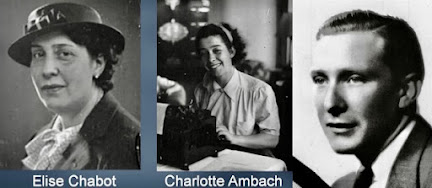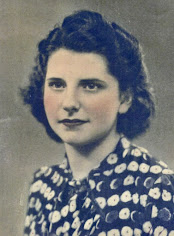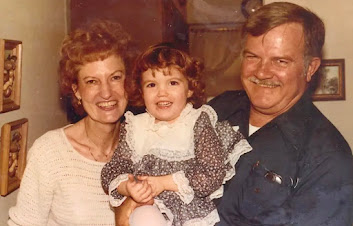By Mary Dodge Allen
Tom Applewhite, a U.S. Army Air Corps bombardier was picked up by the escape line after his B-17 bomber, “The Wild Hare” crashed in a Dutch field on November 11, 1943.
Tom Applewhite, U.S. Army Air Corps, circa 1942 (Public Domain)
This blog is the conclusion of a Four-Part series on the Dutch – Belgian Resistance. Part One, Part Two and Part Three describe how the Smit-van der Heijden Escape line was established, its network of contacts, and airman Tom Applewhite’s journey to the escape line’s safe house in Brussels. To read the previous blogs, click here: Part One. Part Two Part Three
The Day Before The Arrests:
On the afternoon of November 14th, Tom left the Smit-van der Heijden escape line safe house, guided by Ernest van Moorleghem, a Brussels police official. Ernest was deeply involved in the Resistance and often served as a contact between escape lines. He guided Tom to a fishmarket in the Brussels district of Schaerbeek.
Fishmarket operator, Prosper Spilliaert (Far Left); and next to him, his wife, Yvonne de Rudder;
(Far Right) his stepson, Rene Warny; with friends and unidentified Allied airman. (Public Domain)
This fishmarket, run by Prosper Spilliaert, served as a clearinghouse, operated by a separate Resistance group called Service EVA. Its members specialized in interrogating airmen to make sure they weren’t German agents. Then the airmen were passed on to safe houses and given new clothes and false ID papers. Service EVA guides had connections with the Comet Line, which would move the Allied airmen through France and Spain.
Spilliaert’s stepson, Rene Warny took Tom into a room where they photographed airmen to create false IDs. He pointed out bullet holes in the wall. Days earlier, they had uncovered two German agents posing as Allied airmen, and Spilliaert shot them on the spot.
Disaster Strikes! Betrayal and Arrests:
On November 15th - the day after Tom Applewhite reached the Brussels fishmarket - Tom’s crewmate, Nello Malavasi, top turret gunner/engineer for their B-17 named “The Wild Hare,” was arrested in Turnhout, Belgium, along with Willem Schmidt, a guide with the Smit-van der Heijden line.
American Airman Nello Malavasi, on Left; Guide Willem Schmidt, on Right (Public Domain)
How this happened remains unclear, perhaps their appearance or nervous behavior alerted German officials. After the arrest, Willem Schmidt underwent harsh interrogation and, under duress, agreed to cooperate. He arranged for Charlotte Ambach to meet him at the Brussels train station, so she could guide Malavasi to the safe house (her Brussels apartment).
When Charlotte approached them at the train station, she was arrested. The man standing with Willem Schmidt, (posing as Nello Malavasi) was a member of the German military police. In a matter of hours, many others involved in the escape line were arrested, including: Charlotte’s mother, Elise Chabot; and Ernest van Moorleghem.
From Left: Elise Chabot, Charlotte Ambach and Ernest van Moorleghem (Public Domain)
From Left: Karst Smit, in uniform; Ernest van der Heijden (Public Domain)
The two Dutch men who established and ran the Smit-van der Heijden Escape Line - Karst Smit, a Dutch border patrol officer, and Eugene van der Heijden, a Dutch teacher - were tipped off about the arrests in Brussels. They both went into hiding.
The Tragic Outcome:
Willem Schmidt and Ernest van Moorleghem were executed.
Charlotte and her mother Elise were imprisoned in Germany, but on May 6, 1945, the prison was liberated by Allied soldiers, only days before their scheduled execution on May 22nd.
(Charlotte and Ernest van Moorleghem had been madly in love. She never married, and during her long life, she kept a photo of Ernest on a table in her living room.)
Karst Smit was eventually arrested and sent to a series of concentration camps. He survived.
Eugene van der Heijden escaped capture, but his father and two of his three brothers (who operated a safe house) died in concentration camps. Eugene helped his mother carry on, despite the heavy burden of their deaths.
Tom Applewhite in Danger:
Members of Service EVA were alarmed by the number of arrests and feared the fishmarket might be next. On November 16th, Tom Applewhite was moved to the home of businessman Arthur Schrynemakers, where he stayed for a month. While there, Tom met a Jewish family also hiding there.
Nurse Yvonne Bienfait (Public Domain)
On December 19th, Tom was moved to another safe house, the Brussels apartment of nurse Yvonne Bienfait. Because of the recent arrests, she became suspicious Tom was a German agent when she saw him using a German-made razor (a gift from Arthur Schrynemakers).
Two men with Service EVA arrived to give Tom a "medical" exam, which included examining his teeth. (Tom didn’t realize he was in danger of being killed.) These men marked the patterns of Tom's dental fillings, so they could radio them to London. Allied officials confirmed Tom’s identity as an American airman.
False ID photo of Jockey Wiggins (Public Domain)
While at nurse Bienfait’s apartment, Tom met American airman, Jockey Wiggins, whose foot was injured when he bailed out of his B-17. Yvonne Bienfait had been taking care of his wound. These two airmen would travel together from now on. On December 23rd, a Service EVA guide took the men to the Brussels train station and placed them in the hands of a Comet Line guide. He traveled with them to Blandain, the last Belgian train stop before the French border.
In Blandain, they were met by the daughter of local physician. She brought them to the family home, where they met their next guide, code named, “Diane.” The men were served dinner, including a cake decorated with Allied flags. Then they waited at the house until they got a signal from a customs officer that the French border was clear of German patrols.
Amanda Stassart, Comet Line guide, code named: "Diane" (Public Domain)
Crossing Into France:
In the darkness, “Diane” guided Tom and Jockey through snowy fields across the border into France. They walked to the farmhouse of Andre Dewauvrin, mayor of the village, Camphin-en-Pevele. After eating a hot meal, they spent the night in his dairy barn.
Farmhouse of Andre Dewauvrin (recent photo by Bruce Bolinger)
The next day, “Diane” guided them onto a tram going to the city of Lille. A young woman on the tram asked the two airmen to light her cigarette. They couldn’t speak French, so they ignored her, which drew attention and placed them in danger. “Diane” quickly created a distraction, screaming that the woman must be a ‘whore’ trying to pick up her “brother” and “fiancé.” The woman got off at the next stop.
From Lille, “Diane” traveled with Tom and Jockey by train to Paris, and handed them to other guides who took them to the apartment of a kind, aristocratic woman, Madame Elizabeth Buffet, where they spent Christmas.
From Left: Sgt. Stanley Munns, RAF tail gunner; Elton Kevil, U.S. Army Air Corps B-17 waist gunner
False ID photos (Public Domain)
The following day, new guides, working with French railway staff, smuggled them and two additional Allied airmen – Stanley Munns and Elton Kevil - aboard a train to Bayonne, a city near the Spanish border. They were told to pretend to be asleep during the entire overnight trip, to discourage others from initiating a conversation.
On December 27th, as soon as they reached Bayonne, the four airmen were immediately shuttled onto another train headed north, to the town of Dax. (Earlier that night, German patrols had discovered two people trying to cross into Spain, and they had dumped their dead bodies in the Bayonne town square.)
Jean-Francois Nothomb, Comet Line guide, code named: "Franco" (Public Domain)
A Comet Line guide, “Franco” met them in Dax. He and another guide provided bicycles and they all cycled 45 miles to the Café Larre, in Anglet, a small town near Bayonne. Here they met Pierre and Marie Elhorga, Comet Line associates of “Franco.”
From Left: Cafe Larre in Anglet; Pierre and Marie Elhorga (Public Domain)
After a hot meal, they spent the night in the second floor bedrooms. This café was popular with German soldiers, and sleep was difficult, listening to the enemy soldiers carousing, one floor below.
At dusk on December 28th the four airmen cycled behind “Franco” to the River Nive and then crossed it after dark in a rowboat. On the other side, they picked up new bicycles, and “Franco” guided them to a rendezvous with four Basque guides.
Crossing Into Spain:
These guides walked with them to a barn near the Spanish border. Here they received espadrilles (jute-soled shoes that deaden the sound of footsteps) and sturdy hiking staffs. The night was cold, and a mixture of snow and rain fell. They were careful to avoid German patrols as they headed toward the border. They crossed into Spain near Marker 74.
French-Spanish Border Marker 74 (recent photo by Bruce Bolinger)
Crossing the Pyrenees mountains in the cold, wet weather was an ordeal for all of them. Climbing was steep and slippery. Their shoes and clothes were wet, and their freezing feet were bleeding. Jockey Wiggins struggled to walk when the wound on his foot reopened. Stan Munns fell and nearly broke his leg, Tom helped to support his weight as they walked on.
The western Pyrenees in winter (Public Domain)
They were in constant danger of being discovered by Spain’s Guardia Civil. Although Spain was nominally a neutral country, its fascist government was pro-Nazi. Captured airmen could be turned over to the Germans or placed in Spanish prisons.
On December 31, 1943, they reached the Baztan Valley, where a car was waiting. The four airmen were driven to a pub in San Sebastian, run by a British couple. After a hot meal, a warm bath and fresh clothing, another car drove them to the British embassy in Madrid. The men were so exhausted, they slept most of the way.
After a week of rest at the embassy, the four airmen were transported separately to the port of Seville – one in an ambulance, another in a diplomatic car, but Tom unfortunately traveled in the back of a flatbed truck with several drunken sailors.
Einar Apeland, Captain of Norwegian merchant ship, "Lisbeth"
(photo courtesy of Alf Einar Apeland)
On January 7, 1944, Tom Applewhite, Jockey Wiggins, Elton Kevil, Stan Munns and another airman, John Hurst, boarded the Norwegian merchant ship, “Lisbeth,” bound for the British outpost at Gibraltar. They faced danger from undersea mines and traveled with no lights at night, so they wouldn’t be spotted by German subs.
On January 11th the “Lisbeth” finally reached Gibraltar. Days later, Tom and the other airmen were flown back to England.
After the War:
Tom Applewhite, editor of the 1946 Memphis State College yearbook
(photo courtesy of University of Memphis)
Tom Applewhite finished his education at Memphis State College (later, the University of Memphis). He got married, had children and worked in business as a sales manager. He passed away in January 2007.
Undated photo of Tom, his wife Lorraine and their daughter (courtesy, Tom Applewhite)
Author's note: While writing this blog series, I've felt a deep admiration for all the ordinary people who risked their lives to help others during the harsh and dangerous conditions of Nazi occupation. They generously provided shelter and food to those in need (at a time of food shortages and strict rationing). And they bravely faced danger every day, as they saved persecuted Jews, escaped POWs and Allied airmen from death in concentration camps or prison camps.
Sources: I am grateful to Bruce Bolinger, who compiled and published an online treasure trove of information about the Dutch-Belgian Resistance during WWII. For more information, you can click on these links:
https://wwii-netherlands-escape-lines.com/airmen-helped/articles-about-the-line/dutch-and-belgian-heroism-part-ii/
______________
Mary Dodge Allen is currently finishing her sequel to Hunt for a Hometown Killer. She's won a Christian Indie Award, an Angel Book Award, and two Royal Palm Literary Awards (Florida Writer's Association). She and her husband live in Central Florida. She is a member of American Christian Fiction Writers and Faith Hope and Love Christian Writers.
Recent release, anthology devotional: El Jireh, The God Who Provides
Mary's story, entitled:
A Mother's Desperate Prayer, describes her struggle with guilt and despair after her young son is badly burned in a kitchen accident. When we are at the end of all we have, El Jireh provides what we need.
Click the link below to purchase on Amazon:
https://www.amazon.com/El-Jireh-God-Who-Provides/dp/1963611608
Mary's novel: Hunt for a Hometown Killer won the 2022 Christian Indie Award, First Place - Mystery/Suspense; and the 2022 Angel Book Award - Mystery/Suspense.
Click the link below to buy Hunt for a Hometown Killer at Amazon.com:











,_attributed_to_Michael_Dahl_91996.jpg)
































.png)
.jpg)




